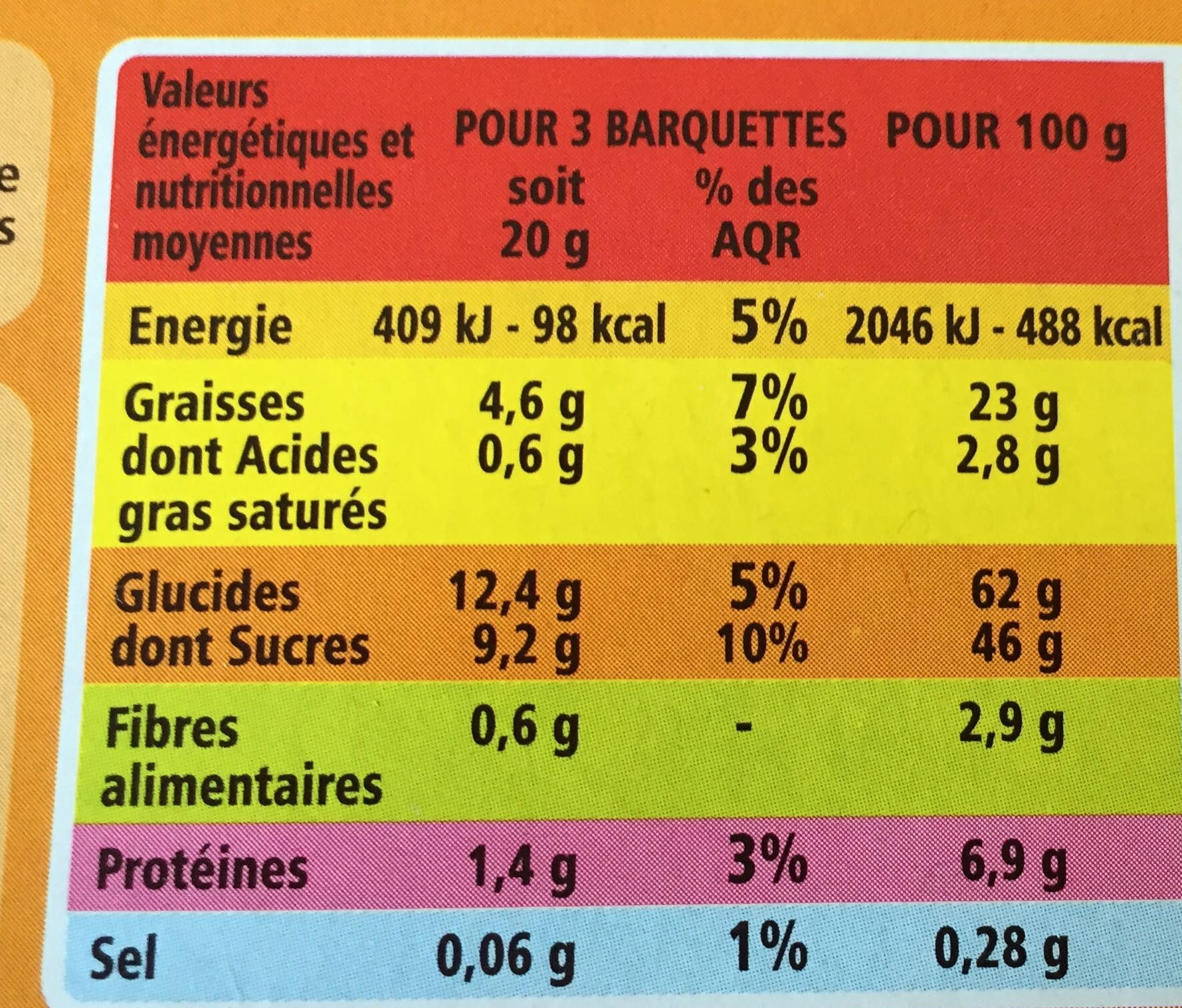Barquettes choconoisette - Casino - 120 g
This product page is not complete. You can help to complete it by editing it and adding more data from the photos we have, or by taking more photos using the app for Android or iPhone/iPad. Thank you!
×
Some of the data for this product has been provided directly by the manufacturer casino.
Barcode: 3222472769743 (EAN / EAN-13)
Common name: 18 génoises garnies d'un fourrage au chocolat en poudre et aux noisettes
Quantity: 120 g
Packaging: Cardboard
Brands: Casino
Brand owner: Casino
Categories: Snacks, Sweet snacks, Biscuits and cakes, Biscuits, Cakes, Chocolate biscuits, fr:Barquettes
Traceability code: EMB 08105A - Charleville-Mézières (Ardennes, France)
Stores: Casino
Countries where sold: France
Matching with your preferences
Environment
Carbon footprint
Packaging
Transportation
Other information
Conservation conditions: A conserver à l'abri de la chaleur et de l'humidité
Recycling instructions - To recycle: Etui carton
Recycling instructions - To discard: Sachet plastique
Report a problem
Data sources
Product added on by agamitsudo
Last edit of product page on by roboto-app.
Product page also edited by casino, casino-off, ecoscore-impact-estimator, kiliweb, nicolas97, org-casino, packbot, quechoisir, teolemon.










